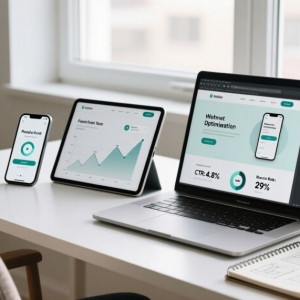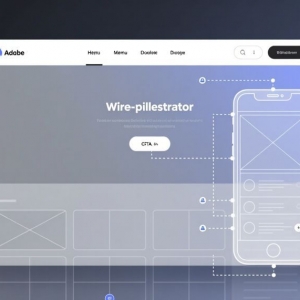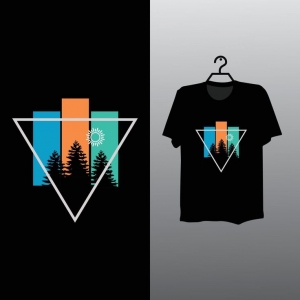When you collaborate with a web design agency, you’ll often hear the terms UX and UI. They’re frequently used together and sound similar, but they represent distinct aspects of website creation. Understanding their differences helps you make informed decisions, ask the right questions, and evaluate what an agency truly delivers.
Imagine using a website or app you enjoy, like an online shop or a booking platform. UX, or user experience, is about how intuitive and satisfying it feels to navigate. UI, or user interface, is what you see and interact with—the buttons, colors, fonts, and layout. UX is the strategy behind the user’s journey; UI is the visual design that guides them.
UX focuses on how things function. UI focuses on how they look.
This is a simplified view, but UX and UI are closely connected. A well-crafted UI supports a strong UX, while a poorly designed UI can undermine even the best UX plan. Both must work together for a website to succeed.
Why UX Drives Business Success
UX design is about solving user problems. It starts by understanding your audience: Who are they? What do they want to achieve? What frustrates them? A UX designer studies how people use your site, identifying where they get stuck or confused. They then adjust the navigation, text, or structure to make tasks simpler.
For your business, effective UX delivers tangible results. It reduces customer support queries, boosts conversion rates, and helps users complete their goals—whether that’s making a purchase or finding information. This leads to fewer abandoned carts, less confusion, and happier customers.
UX combines research and design, using tools like user interviews, analytics, and usability testing. A web design agency with strong UX expertise will provide data showing how their changes improve user behavior. This evidence-based approach makes UX a smart, measurable investment.
Why UI Enhances Your Brand
UI is the visual and interactive layer of your site. It includes the buttons, typography, color schemes, and spacing that users see and touch. UI designers ensure these elements are cohesive and intuitive, making navigation feel natural and predictable.
For your business, UI shapes how customers perceive your brand. A clean, professional interface builds trust and signals quality. However, a stunning UI can’t fix a confusing user flow. If navigation is unclear, even the best visuals won’t help. UI’s role is to make interactions clear and engaging.
When a web design agency handles UI, expect deliverables like mood boards, wireframes, and style guides. These tools ensure your site stays visually consistent, even as it grows. A solid UI system also simplifies future updates, keeping your brand cohesive.
How UX and UI Work Together
Consider a user trying to book a consultation online.
UX begins by analyzing the process. How does the user find available times? What information is required? Are there too many steps? Through testing, UX might discover that users abandon the form because it’s too complex. The solution could involve simplifying the steps or clarifying instructions.
UI then designs the visual elements—clear button labels, properly sized fields, and a color palette that guides the user’s focus. It ensures the form is visually intuitive and approachable. Together, UX and UI create a seamless experience that encourages users to complete the booking.
In short: UX maps out the process, and UI makes it visually clear and pleasant to follow.
Why This Matters When Choosing a Web Design Agency
Hiring a web design agency means investing in a tool that serves your customers, not just a website. A site that looks amazing but confuses users won’t deliver results. A functional site that appears unprofessional may fail to build trust. Both UX and UI are critical to success.
Ask agencies how they approach UX and UI. Do they test designs with real users? Do they use data to guide their work? Can they share examples of UX improvements that drove results? Do they provide a UI system to maintain brand consistency?
Top agencies are transparent about their process. They explain trade-offs, set realistic timelines, and avoid vague promises. If their proposal focuses only on visuals, ask about user testing. If it’s all about functionality, confirm they’ll deliver a polished interface. Both elements are essential.
Questions for Non-Technical Owners
You don’t need design expertise to pick a reliable web design agency. Ask straightforward questions: How do you test your designs? What user data informs your decisions? Who handles the visuals versus the user flow? How do you measure success?
Request case studies that align with your goals. For an e-commerce site, ask for online store examples. For lead generation, seek conversion-focused projects. A good agency tailors its approach to your specific business needs.
Getting Results on a Budget
You don’t need a large budget to improve UX and UI. Start with high-priority areas like your checkout process, contact forms, or main landing pages. Addressing the biggest user pain points first can significantly boost conversions and customer satisfaction.
A results-oriented web design agency will focus on changes that deliver the most impact. They won’t push for a full redesign unless it’s necessary. Instead, they’ll target specific issues that hinder users, delivering efficient and effective results.
Final Thoughts
UX and UI are distinct but inseparable. UX creates a logical, user-friendly journey. UI makes that journey visually appealing and intuitive. Both must align with your business goals and user needs.
When selecting a web design agency, prioritize their process and measurable outcomes. Look for evidence of user testing and data-driven decisions. Don’t settle for a site that’s only beautiful—it must also be functional. A well-designed, user-friendly site drives growth and keeps customers engaged.
By focusing on these principles, you’ll choose a partner that delivers real value and helps your business thrive.











